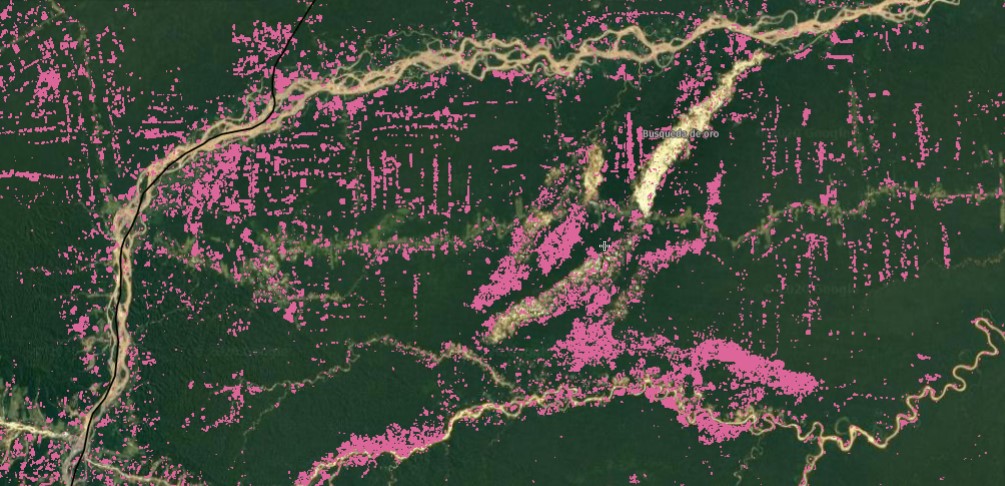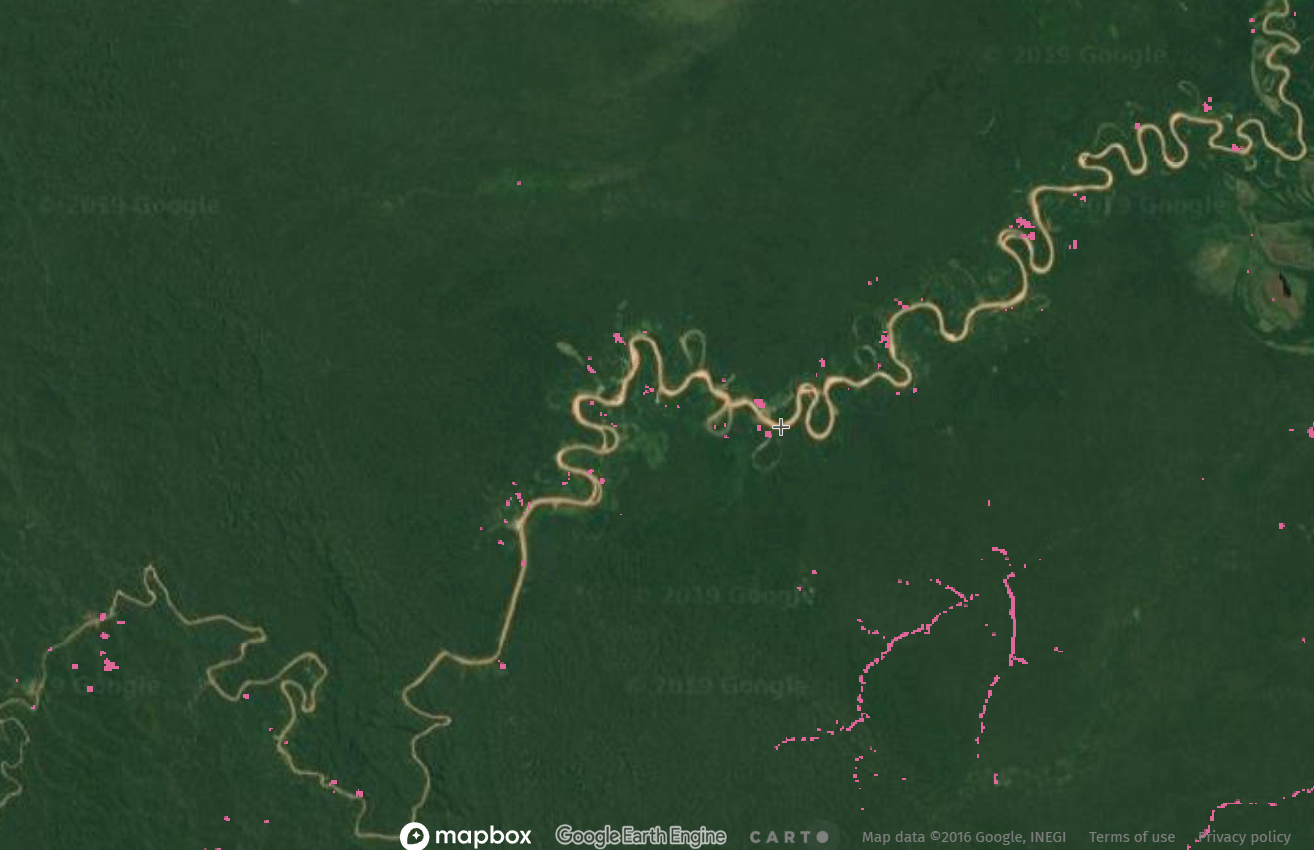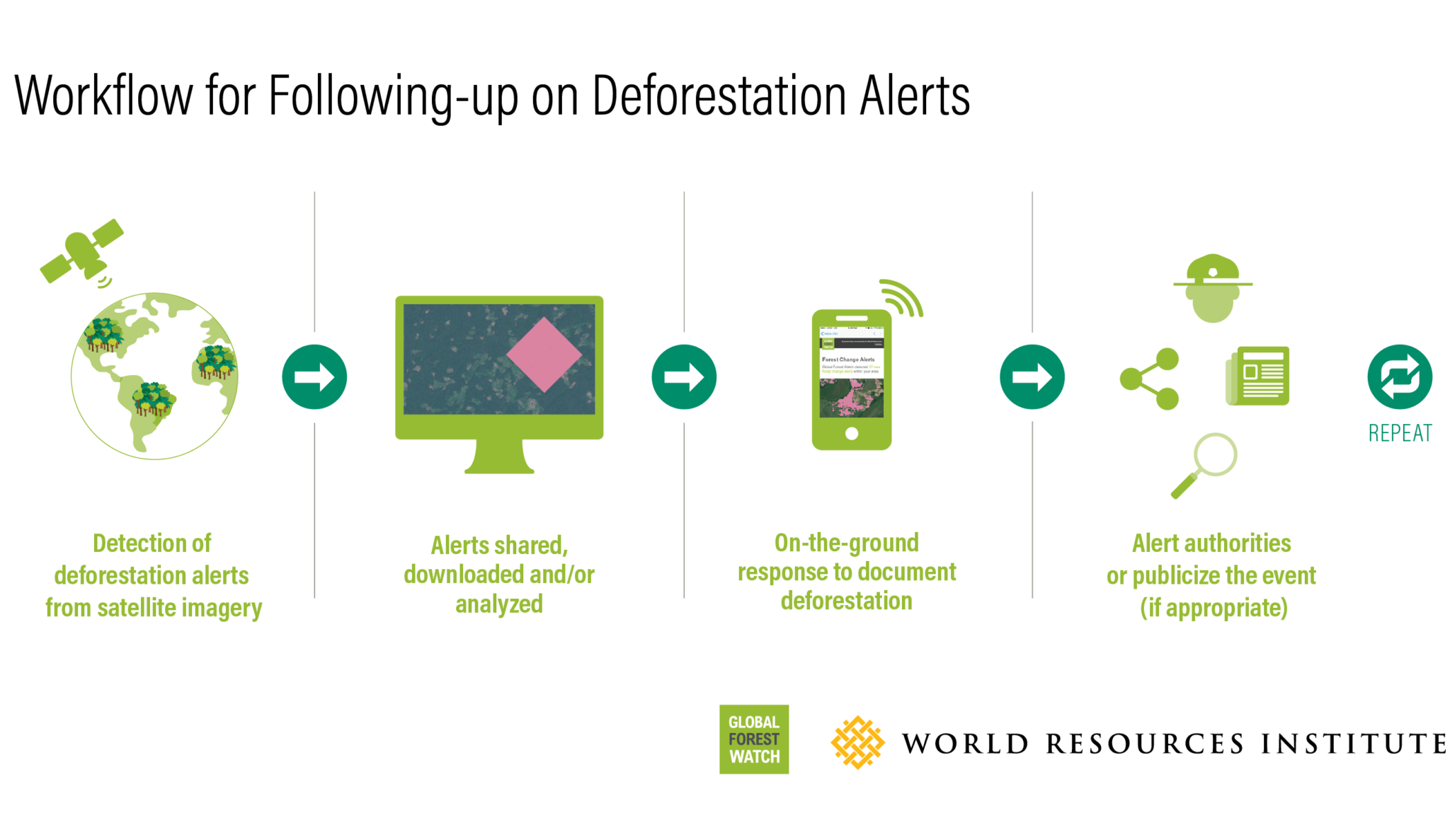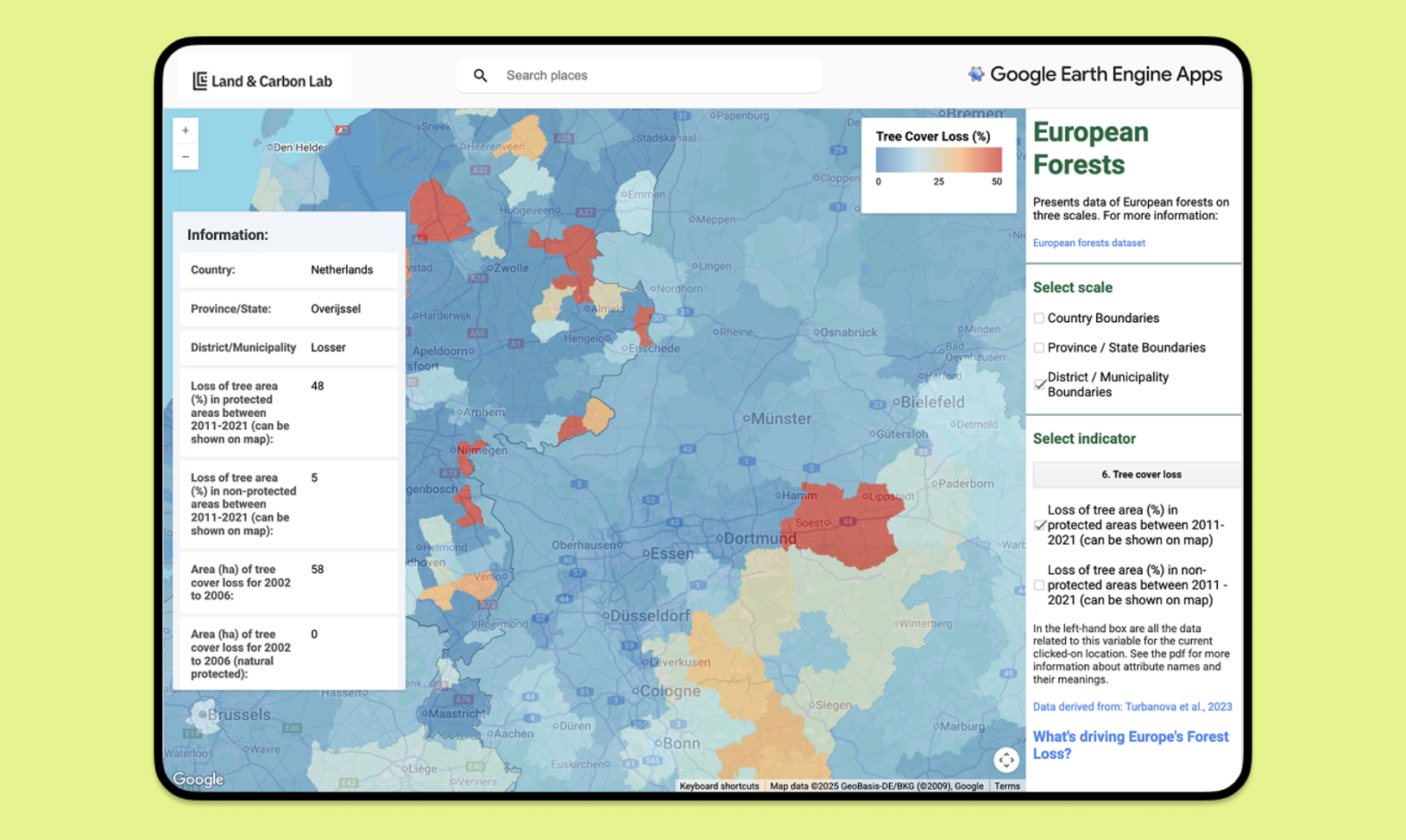GLAD Deforestation Alerts, Explained

GLAD deforestation alerts in Madre de Dios, Peru.
Every six seconds the world loses one football pitch worth of tropical primary forest. Knowing when and where deforestation is happening as soon as possible is crucial to stopping it. The GLAD alert system devised by the University of Maryland’s Global Analysis and Discovery (GLAD) lab uses satellite imagery to collect weekly data on deforestation across the tropics. But how exactly do these alerts work? What do they detect, and what don’t they detect? Here are 11 important questions about the GLAD deforestation alerts on Global Forest Watch (GFW), answered.
1. How are GLAD alerts created?
GLAD uses imagery from NASA’s Landsat satellites to automatically flag areas where the forest canopy has been disturbed. The GLAD system analyzes the most recent images and compares them to historical data to determine where trees have been lost. The entire system is run within Google Earth Engine.
2. What do GLAD alerts detect?
Each GLAD alert indicates a 30 by 30 meter area (around the size of two basketball courts) that has experienced a disturbance in the forest canopy, which indicates that trees in that area may have been lost or removed. The primary purpose of the GLAD alert system is to alert people to potential deforestation, but GLAD alerts also pick up additional disturbances such as rotation cycles in plantations, forest degradation from fires and storms, and natural changes like landslides and windthrows. Still, the alerts are intentionally titled “deforestation alerts” because the purpose is to alert users to the possibility of deforestation, which is what most are looking for in order to quickly respond.
 GLAD alerts track the expansion of a logging road in Peru.
GLAD alerts track the expansion of a logging road in Peru. 3. What is the coverage of GLAD alerts?
GLAD alerts cover the entire tropical region— latitudes from 30 degrees North to 30 degrees South. However, the alerts most reliably detect changes in areas with at least 60% canopy cover, making them most useful in dense tropical forests.
4. How frequent are the GLAD alerts?
We talk about the GLAD alerts as a “weekly” deforestation alert product because the Landsat satellites image every pixel on Earth roughly every eight days. However, cloud cover can obscure satellite images and result in much longer gaps between alerts. The system itself is updated every day as new images from various locations become available.
5. What is the difference between “confirmed” and “unconfirmed” alerts?
GLAD alerts can be either “confirmed” or “unconfirmed”, with “confirmed” alerts representing loss that has been detected in multiple images. Every alert displayed on GFW starts out “unconfirmed” when loss is first detected in a single Landsat image. The system then tracks every additional image in that location, and if loss is also flagged in one of the next four Landsat images, it becomes “confirmed.” Any alert not confirmed within six months of its initial detection is removed from the database, whether because it was a false positive, consistently covered by clouds, or a small clearing with rapid vegetation regrowth. This means that at the time of publication (September 2, 2020), unconfirmed alerts on GFW that were detected on or after March 2, 2020 are still subject to change.
6. How are GLAD alerts intended to be used?
GLAD alerts are intended to provide an early indication of where new deforestation may be occurring so that law enforcement officers, local communities, advocacy organizations and other responders can take targeted action. GLAD alerts are a starting point for further investigation — they pinpoint where deforestation may be happening, so that users can follow up. We’ve seen GFW users take a number of different approaches to figure out whether an alert reflects a problematic deforestation event, including looking at recent satellite imagery, analyzing overlaps with concession and protected area boundaries and visiting the location in the field. Follow-up is important to confirm what is happening and get additional information before taking action against any potential deforestation.

In practice, most applications of GLAD alerts are better served by using both “confirmed” and “unconfirmed” alerts, even if the confirmation process does reduce the chance of false positives. This is because cloud cover can result in months-long delays between when an alert is detected and when it’s confirmed. Waiting on alerts to be confirmed could mean that it will be too late to take meaningful action.
The alerts are intended to indicate where change may be happening as quickly as possible, while other products like UMD’s annual tree cover loss data can provide a more accurate estimate of changes since it uses an entire year’s worth of satellite images to detect change.
7. Can GLAD alerts be used to calculate the area of forest loss?
We do not recommend using GLAD alerts to estimate the area of forest loss for two reasons. First, the alerts are purposefully conservative, under the assumption that it is more important to limit the number of false positives than to detect every single pixel that has experienced disturbances. Most deforestation occurs in patches of alerts. Detecting just a few pixels within those patches should be enough to inspire follow up action.
Second, the GLAD alerts prioritize speed over accuracy, particularly for unconfirmed alerts. This is because the alerts are detected on only the latest Landsat image, meaning there are going to be false positives, such as errors from haze or corrupt data in the satellite images, that haven’t been corrected. Because of these two factors, calculations of area from alerts are not highly accurate. GFW includes only the number of GLAD alerts, rather than the area, on GFW’s map and dashboard for this reason.
Area calculation is less of a concern at very local levels, where one can better evaluate the performance of the alerts compared to recent satellite imagery. The annual tree cover loss data is also a useful tool for estimating areas of loss, as it has a higher accuracy than the alerts.
8. How much lag time is there between alerts and the deforestation they detect?
The time lag between a disturbance event and detection by the GLAD system can range between three days and several months depending on cloud cover. In the cloudiest places on earth— a tropical rainforest, for example— the date of detection is sometimes months later than the actual date of the disturbance event. Cloud cover poses a limitation to GLAD alerts because it can obstruct the satellite’s “view” of the forest below, making it impossible to detect forest changes.
The example below shows GLAD alerts in a primary forest in and around Berbak National Park in Indonesia. The alerts show damage from forest fires that happened in September and October of 2019 but, because of cloud cover, the majority of GLAD alerts were not detected until March through May of 2020, with some even detected nearly a year later in August.
Not all satellites face the same problems with cloud cover – those that use radar waves, such as the European Space Agency’s Sentinel-1 satellites, can gather observations from the ground even under cloudy conditions. GFW is working with Wageningen University, Satelligence, and a number of the world’s largest palm oil producers and traders on a new alert system, called RADD, that will use Sentinel-1 data to detect potential deforestation without gaps.
9. Can GLAD alerts give an indication of whether deforestation is better or worse than last year?
We do not recommend using the GLAD alerts for global or regional trend assessment due to limitations in the alerts, including the six-month long confirmation process, lag times in detection due to cloud cover and inaccuracies in alert areas.
To illustrate this first problem, one analysis of the alerts in the Democratic Republic of Congo found that 65% of GLAD alerts initially detected in 2017 were never confirmed and eventually removed from the database due to both false positives and lack of cloud-free images. This is enough to give a false impression of the direction of deforestation trends.
Likewise, updates to the system and variation in cloud cover between years pose additional barriers to using GLAD alerts for this purpose. We recommend using the annual tree cover loss data for a more accurate comparison of the trends in forest change over time. The annual data is currently available through 2019, and the 2020 data will be made available early next year.
10. How can GLAD alerts give us more information about the pandemic?
One question that has become increasingly pressing this year is whether the COVID-19 pandemic has had an impact on deforestation rates. It’s not an easy question to answer, with GLAD alerts or other available data.
Even though GLAD alerts are not designed to assess trends over time, especially before the six-month confirmation process is complete, they can still be valuable to understand where deforestation is ongoing or where new areas of deforestation are emerging. For example, the Rio Plátano Biosphere Reserve in Honduras has consistently had one of the highest densities of alerts within a protected area, a trend that has persisted since March. Using GLAD alerts in conjunction with anecdotal evidence from the ground can help tell a more complete story about how the pandemic has impacted deforestation in particular locations.
11. How can I access GLAD alerts?
GLAD alerts are available in a number of tools and formats:
- The Global Forest Watch platform allows users to visualize the GLAD alerts geographically alongside other data on protected areas, concessions and land cover.
- Users can subscribe to GLAD alerts within a particular area of interest through MyGFW, to receive an email notification any time a new alert has been detected.
- The Forest Watcher mobile application allows users to download GLAD and fire alerts to their smartphones in order to use offline and collect information in the field.
- The MapBuilder template allows anyone to create a webmap with the GLAD alerts built in, or those with existing platforms can pull in GLAD alerts using our dynamic web service.
- The raster data files for the GLAD alerts are available for download from the University of Maryland’s map portal.
- The GLAD alerts are also available as Google Earth Engine image assets; details are available on the download page of the University of Maryland’s map portal.


